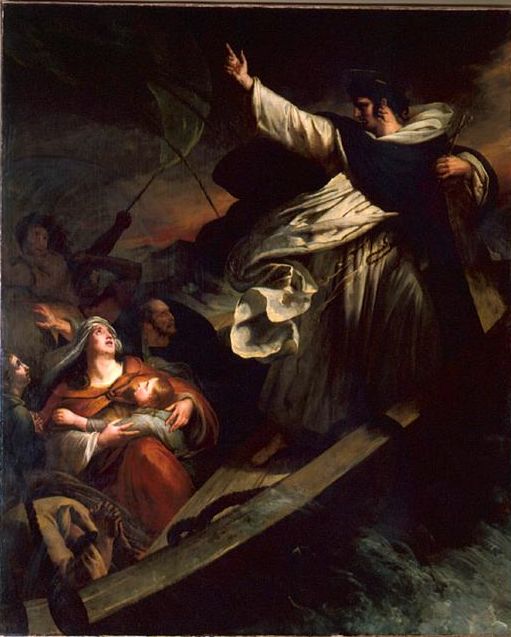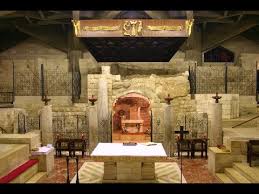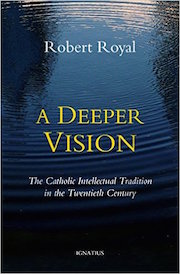Christian biblical exegetes have traditionally distinguished four senses of Scripture: the literal, the allegorical, the anagogical, and the moral. In the Middle Ages, the differences among them was summed up with this little Latin poem:
Littera gesta docet,
Quod credas allegoria.
Moralia quod agas,
Quo tendas anagogia.
The literal sense teaches what happened,
The allegorical what you should believe,
The moral what you should do,
The anagogical where you are going.
The Catechism tells us that, “The profound concordance of the four senses guarantees all its richness to the living reading of Scripture in the Church.” Indeed, such was the case for centuries.
And yet one rarely hears any mention of the three “spiritual” senses anymore. This is odd, not only because making use of all four senses has been at the heart of great preaching throughout the centuries, but also because the modern lectionary was arranged with Old Testament readings to match the Gospel reading precisely to foster a sense of how, as St. Augustine famously said, “the New Testament lies hidden in the Old, and the Old is made manifest in the New.” The modern lectionary is tailor-made for allegory and the other spiritual senses.
And yet we rarely hear them in modern preaching. The usual little moral lessons in Mass – be “nice,” “tolerant,” “accepting” – have little to do with the moral sense as traditionally understood, which involved acting in accord with the Commandments, the Beatitudes, and the cardinal and theological virtues.
Even the literal sense of the text often disappears from sight because preachers rarely repeat the Bible readings for the day even though, by the time they make it into the pulpit, many people in the congregation have forgotten them. In my experience, priests will mention the Gospel occasionally, the Old Testament reading rarely, and the Epistle never. This is a shame because the readings from the Pauline epistles contain some of the most important theological material in the entire Bible.
Instead of delving right into the Scriptural readings for the day, it is not uncommon for modern preachers to start with a personal story or a joke. In the Middle Ages, there was something analogous: little pious stories preachers loved, called exempla. There were volumes filled with them, just as we have “preaching guides” today.
Although widely popular among others, neither Thomas Aquinas nor Bonaventure ever used exempla. Here we have arguably the two greatest preachers of the thirteenth century, and neither of them used these popular little stories. Why not?

In Paradiso 29.109–117, Dante has Beatrice chastise preachers for their use of these jokes and little stories:
Christ did not say to his first company:
“Go, and preach idle stories to the world”;
but he gave them the teaching that is truth,
and truth alone was sounded when they spoke;
and thus, to battle to enkindle faith,
the Gospels served them as both shield and lance.
But now men go to preach with jests and jeers,
and just as long as they can raise a laugh,
the cowl puffs up, and nothing more is asked
So, too, the Dominican friar, Jacopo Passavanti (ca. 1302–1357), suggests that some of his fellow preachers were acting more like “jongleurs and storytellers and buffoons” than like the preachers they were supposed to be.
Thomas Aquinas wrote to his contemporary, Gerard of Besançon, that, “it is not proper for the preacher of truth to be diverted to unverifiable fables.” And Thomas’s biographer, Fr. Jean-Pierre Torrell, tells us: “Thomas believes orators need an art that can move feelings, but he refuses to reduce that art to the wisdom of this world. That is why we scarcely find in him those little stories (exempla) so valued by so many preachers. He warns us, on the contrary, against what he calls ‘frivolities’ (frivolitates).” Good advice, that.
In retrospect, one imagines there were both good exempla and bad. Many of us have had the privilege of hearing sermons with interesting and illuminating stories or especially illustrative examples from great literature or the lives of the saints. But this is not common.
I don’t deny the value of using concrete “examples” to help illustrate the points in a sermon since, as many medieval preaching manuals pointed out, the common people tend to enjoy visual imagery more than abstract reasoning. And yet, these little stories can also be overused or poorly used. I know a good number of priests who can’t get through a homily without telling a story about themselves. Many seem to think this is a good way to “make the Scriptures relevant” to their congregations.
It isn’t. Such preachers are replacing the universal word of God with a particular story from their own lives. The story of Moses isn’t just another story about some person I’ve never met; it has significance for me as a moment in salvation history. Moses is also a “type,” a prefiguration, of Christ, as are David, Abraham, and Melchizedek. When most Catholics go to Mass, they want to hear about Christ and salvation history, not about Father Dave’s trip to Cleveland or what cute thing Fr. Brad’s niece said to her mother.
The way to make the Scriptures “come alive” is with an intelligent use of the spiritual senses. Too many priests are leaving the Church’s best tools for lively preaching unused. The results are often a thin gruel, lacking the spiritual nourishment educated adults require in a toxic, increasingly anti-Catholic culture.
Catholics with high levels of secular training in law, business, or medicine who have an eighth-grade level understanding of their faith are likely to be dominated by their secular training alone. “Faith” becomes something for children, but not something to guide one’s everyday activities or the course of one’s life. Little stories about “being spiritual” will not change that. An educated congregation needs educated preaching, as St. Thomas and St. Bonaventure understood.















